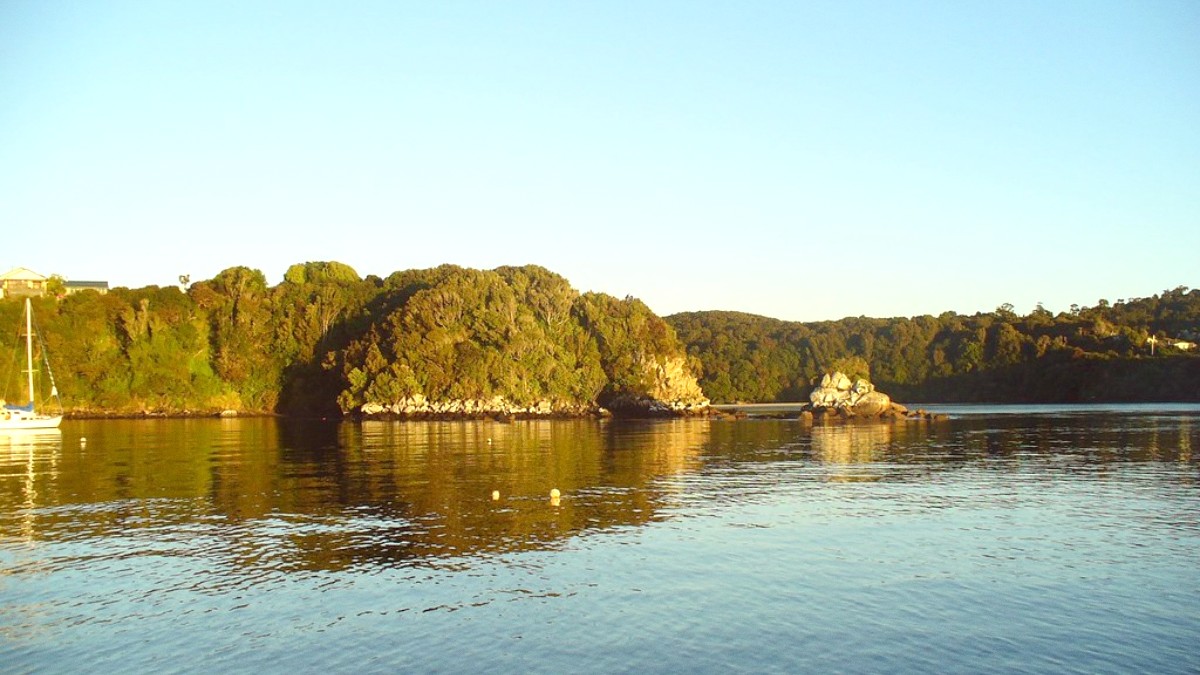
New Zealand
Climate Patterns Throughout the Year: Precipitation remains high year-round, averaging around 1,500-1,600 mm (59-63 inches) annually, with over 200 wet days each year. Humidity stays consistently high. Stewart Island does not experience monsoons or hurricanes.
Strong winds and heavy rain are common throughout the year. The weather can change rapidly. Prepare for all conditions regardless of the season. Stewart Island does not experience monsoons or hurricanes.
Strong winds and heavy rain are common throughout the year. The weather can change rapidly. Prepare for all conditions regardless of the season.
The island does not experience monsoons or hurricanes.
Warmest temperatures, longest daylight hours.
Hiking, outdoor activities, kiwi spotting on night tours.
Higher visitor numbers. Accommodations and tours book out in advance. Prices peak.
Fewer crowds, potential for lower prices.
Most outdoor activities with proper preparation.
Weather can be unpredictable. Some tours may have reduced frequency.
Very few visitors, lower prices.
Solitary nature experiences, aurora australis viewing.
Coldest temperatures, shortest daylight hours. Risk of travel disruption.
Summer (December-February) provides the best conditions for hiking. Shoulder seasons (March-April, October-November) are also viable with proper gear. Birdwatching is good year-round, though specific species migrations may vary.
Winter (June-August) has the longest dark nights for viewing. Aim for new moon phases and clear skies for optimal visibility.
Summer & Shoulder seasons are ideal.
Available year-round, more dark hours in winter.
Good throughout the year.
Winter offers the best viewing conditions.
More frequent in warmer months.
New Zealand's entry requirements are straightforward for most travelers. For assistance with visa applications, consider services like IVisa or VisaHQ.
New Zealand has a visa waiver program for many countries, allowing stays of up to three months (six months for UK citizens). Check the official Immigration New Zealand website for specific country requirements. If your country is not on the visa waiver list, various visa types exist, including visitor, work, or student visas. You typically apply online through the Immigration New Zealand website.
Upon arrival, all passengers complete a New Zealand Passenger Arrival Card. Biosecurity rules are strict. Travelers from visa-waiver countries (except Australia) must request an Electronic Travel Authority (NZeTA) before travel.
For flight compensation, AirHelp assists with delayed or canceled flights. For anti-theft bags and security, explore Pacsafe.
| Service | Number | Notes |
|---|---|---|
| Emergency Services (Police, Fire, Ambulance) | 111 | Limited cell coverage outside Oban. |
| DOC Visitor Centre (Oban) | +64 3 219 0005 | For track conditions, hut bookings. |
| Medical Centre (Stewart Island) | +64 3 219 1101 | For serious emergencies, patients fly to Invercargill. |
| Lost/Stolen Passport | Contact embassy/consulate | Your country's embassy or consulate in Wellington or Auckland. |
Stewart Island is a safe destination with minimal crime. The main safety concerns relate to the natural environment.
Abundant, especially near water. Bites are itchy and can last for days. Wear long sleeves and trousers. Use strong Insect repellent containing DEET or picaridin. Carry an after-bite itch eraser for relief.
New Zealand has high UV levels. Use High SPF sunscreen (at least SPF 30+). Wear Hats and Sunglasses. Seek shade during peak UV hours (10 am - 4 pm).
Risk due to changeable weather, even in summer. Dress in layers with appropriate waterproof and windproof outerwear. Carry emergency supplies for hikes.
Healthcare Access
Stewart Island has a small medical center in Oban with a resident nurse practitioner. For serious emergencies, patients fly to Invercargill Hospital on the mainland. Dial 111 for Police, Fire, or Ambulance.
Tap water in Oban and DOC huts on the Rakiura Track is generally safe to drink. When collecting water from streams or rivers in the backcountry, filtering, boiling, or treating it is recommended. Food hygiene standards are high in New Zealand.
Cell phone coverage is limited outside of Oban. Satellite phones or personal locator beacons (PLBs) are recommended for remote hiking.
Stewart Island has extremely low crime rates. Oban is generally very safe.
Earthquakes occur in NZ, but Stewart Island is less prone to severe ones. Coastal areas may be at risk for tsunamis.
Strong winds and heavy rain can lead to track closures, ferry cancellations, and hazardous conditions. Always check forecasts and DOC alerts.
Travel insurance is highly recommended for all visitors. It covers medical emergencies, trip cancellation, lost luggage, and personal liability. Ensure your policy covers planned activities like hiking.
Stewart Island can be an expensive destination due to its remote location and reliance on mainland supplies. Plan your budget carefully.
New Zealand Dollar (NZD). ATMs are available in Oban at the Four Square supermarket. Credit cards (Visa, MasterCard) are widely accepted.
Carry some cash for smaller purchases or remote services. Groceries on Stewart Island can be more expensive due to freight costs, so consider stocking up on non-perishable items in Invercargill or Bluff.
Walk everywhere in Oban. Utilize DOC Huts for cheaper accommodation on trails (book in advance). Consider off-peak travel for potentially lower rates. Split costs for holiday homes or tours if traveling in a group.